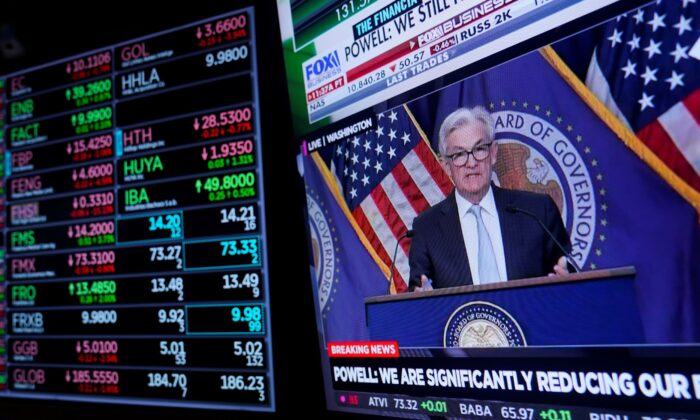from The Epoch Times:

Ordinary Americans can expect their wealth to get repeatedly chipped away as the monetary system degrades and requires progressively more intervention by authorities to perpetuate itself, according to an influential author and economist. It may take “a very long time,” however, for the system to actually break, he told The Epoch Times.
The recent downfall of two sizable American banks, Silicon Valley Bank (SVB) and First Republic Bank, rattled the financial markets. Investors are now looking to the Federal Reserve to provide relief and within months reverse its policy of raising interest rates. That’s after the central bank, together with the Treasury and the Federal Deposit Insurance Corporation (FDIC), already shored up the banking sector, offering special loans and guaranteeing uninsured deposits for the failed banks.
TRUTH LIVES on at https://sgtreport.tv/
The failures, however, represent a symptom of a broader problem—one the central bank can’t fix, according to Daniel Lacalle, fund manager, economist, and prolific author.
“The problem here is the concept of ‘what can be done?’” he said, arguing central bank market interventions intended to smooth over market perturbations tend to simply redistribute the risk and losses—and at the added cost of making the system more fragile in the long run.
“Every time they try to solve a bubble with more liquidity injections, they create another bubble,” he said. “What you have to do first is not implement crazy monetary policies.”
He was referring to the policy of extremely low interest rates that the Fed maintained for most of the past decade.
Free Money
Lacalle alluded to the Austrian economic theory, which posits that central banks can’t set interest rates correctly. When the economy is not doing well, central banks set the rates artificially low in order to “stimulate” the economy. That allows companies to loosen fiscal discipline and makes credit available to projects that would be otherwise too risky to attract capital. When the economy “overheats”—the availability of credit outstrips the production capacity of the economy, resulting in inflation—the central bank raises rates, tightens credit, and the poorly performing risky projects go under. Because rate hikes take more than a year to fully manifest in the economy, central bankers tend to continue hiking for too long. Excessively high rates then cause the destruction of even viable businesses. Recession ensues. The central bank then tries to cushion the recession blow by dramatically cutting rates, thereby repeating the cycle.
“After a decade of excess, of course, there are going to be episodes like SVB and these other regional banks,” Lacalle said.
SVB was the banker of choice for many Silicon Valley tech startups and their venture capital funders that have benefited from the protracted period of loose credit. In just a few years, it grew into one of the 20 largest banks in the country, with some $200 billion in assets. When its investments started to underperform and its stock dropped, clients got cold feet and many moved their money elsewhere, triggering a bank run.
Regulation
Some economists have argued that the SVB crash was the fault of regulators. The Federal Reserve of San Francisco should have stepped in when it saw warning signs of SVB’s instability, argued the Brookings Institution’s Aaron Klein in a recent commentary.
Lacalle wasn’t convinced. He pointed out that on paper, SVB was following the regulatory mantras.
“You’re hedging your volatile positions in technology and risky ventures, which obviously is your core business—that’s nothing we can do about—and you’re hedging it with long-term treasuries and mortgage-backed securities,” he said.
But it was exactly the large treasuries portfolio, which dropped in value due to the Fed’s rate hikes last year, that pushed SVB over the edge.
Klein also pointed to SVB’s unhedged $100 billion position in mortgage-backed securities. But Lacalle noted that the Fed itself has designated those as low-risk, sitting on $2.6 trillion of them. If the Fed, as a regulator, was to declare mortgage-backed securities as risky, how could the Fed, as a monetary policy setter, declare them low-risk?
Intervention
The Fed’s response to the SVB crisis is a typical example, Klein suggested, of the system’s underlying flaw—a short-term solution with long-term negative implications.
Shortly after regulators took over SVB, the Fed, the Treasury, and the FDIC announced that no depositors in the failed banks will lose money, despite most of the deposits being above the FDIC insurance limit of $250,000 per account. Furthermore, to ensure no other banks hit a liquidity crunch because of the value drop in their treasury holdings, the Fed will allow them one year to borrow against those holdings at “par value”—the Fed will de facto pretend the treasuries are worth more than they currently are.




